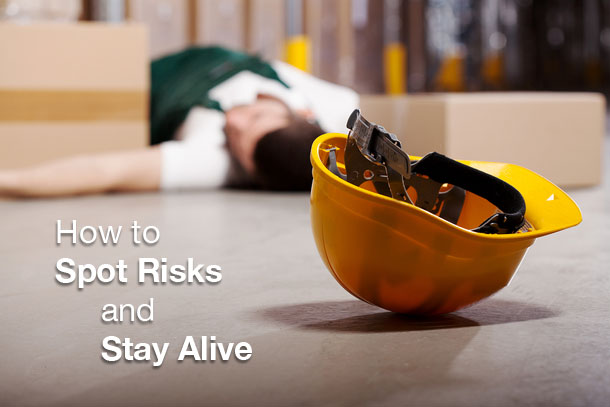As we head into 2014, we thought it was important to share what building and business owner’s responsibilities are when it comes to fire safety. In this two-part series, we’ll highlight comprehensive steps you can take to ensure your building is both up-to-code and, just as important if not more, safe for you, your employees, customers, and family!
Fire Safety Inspections – What to Look For
Most insurers and government fire safety standards require an annual inspection to verify that business buildings and their equipment and occupants are protected by the existing fire control methods. Ultimately, the business and/or building owner is legally responsible for the safety of their premises.
If you don’t have a dedicated fire team, and most small businesses don’t, you could be subject to expensive fines if deficiencies are cited by the local government fire marshal. Your business could even be closed down until any problems are corrected and the repairs re-inspected. There are simple, inexpensive steps that a small business owner can perform periodically to ensure a good annual inspection.
If it has been some time since you performed an inspection or had one done by a third party, or you have recently purchased a business, here are some things to consider. Know what the codes require for your local area. Your local fire marshal and some insurers can furnish you with a checklist. While every jurisdiction may have area-specific codes, in general they tend to follow OSHA and NFPA guidelines. Keep a record of when and what you inspected, using the checklist or standard form if available, or create your own form, note any deficiencies and date and sign it. Keep the document safely stored and accessible. If you use a third-party inspector, be sure you get a copy of their report.
Common Areas for Fire Safety Deficiencies
Here are some of the more common areas that inspectors often cite as deficiencies.
1. Lack of accessibility to fire lanes, fire alarm panels and fire department connections. Make sure that standpipes, panels and valves are not blocked by things like trash containers, vehicle parking, construction debris, outside storage containers or machinery. Mark the required clearances (check with authorities for the minimum requirements) with yellow tape or painted lines inside the building, install guards and use appropriate signage to remind everyone to keep both inside and outside areas clear.
2. Combustible items should be kept out of areas that contain electrical connections or open flames. Things like cleaning rags or paper towels, lavatory supplies and flammable aerosols or solvents should be properly stored in approved storage areas.
3. Check that all portable fire extinguishers have been inspected as required (usually every 12 months) and that they are in the green or operating range. When having portable fire extinguishers serviced do not allow the vendor to remove your extinguishers from the building without leaving you replacements.
4. Check all exit and emergency signage and replace any burnt out bulbs or dead batteries.
5. Be sure emergency exits operate properly (including sounding an alarm when opened) and are accessible at all times. Never allow exits to be blocked or locked during normal business hours.
6. Depending on codes in your area, there may be restrictions on the use of small appliances, extension cords and multi-plug adapters. Find and remove any such items and caution employees about their use.
7. Keep the building in good repair. Damaged or missing doors and holes in walls or ceilings should be repaired or replaced to minimize the spread of fire from room to room.
8. If accessible, check sprinkler heads for damage and obstructions, and keep storage such as racks or boxes away from sprinkler heads and ceilings. Know what the minimum clearance is for ceilings, panels, manifolds, standpipes and portable extinguisher stations and keep those areas clear. Make sure that there is no buildup of cobwebs, dust and other debris on the walls and ceilings.
9. Check cords and electrical connections on equipment and approved appliances for fraying and damage from cuts or traffic.
10. Make sure that your address is clearly visible from any vehicle access area. Paint or mount large letters with your address prominently displayed on the outside of the building and make sure the address is visible to emergency vehicle drivers. Remember that fire equipment is taller than the average car or pickup and mount your address accordingly, observing local codes.
If all of this sounds like a lot of work, or you are unsure whether you are knowledgeable enough to catch any potential problems, you might want to contract with an qualified third party inspection service. While there are no national governmental standards for fire safety inspectors, the National Fire Protection Association’s section 1031 outlines recommendations usually followed and even codified by most fire safety professional organizations, including fire departments.



 vehicles, and the risk for injury increases with the expanded usage of such materials. A common and effective method for helping deter adverse events in construction includes the utilization of signage.
vehicles, and the risk for injury increases with the expanded usage of such materials. A common and effective method for helping deter adverse events in construction includes the utilization of signage. 
 hinery, even in the winter. In the summer, the temperatures of a facility can top 110 very easily. Heat stress is very dangerous, and needs to be taken seriously.
hinery, even in the winter. In the summer, the temperatures of a facility can top 110 very easily. Heat stress is very dangerous, and needs to be taken seriously.

 use downtime in production, expenses related to the injury, and may even result in legal costs. With this in mind, reducing workplace injuries is an essential part of keeping any facility running smoothly, and profitably.
use downtime in production, expenses related to the injury, and may even result in legal costs. With this in mind, reducing workplace injuries is an essential part of keeping any facility running smoothly, and profitably.